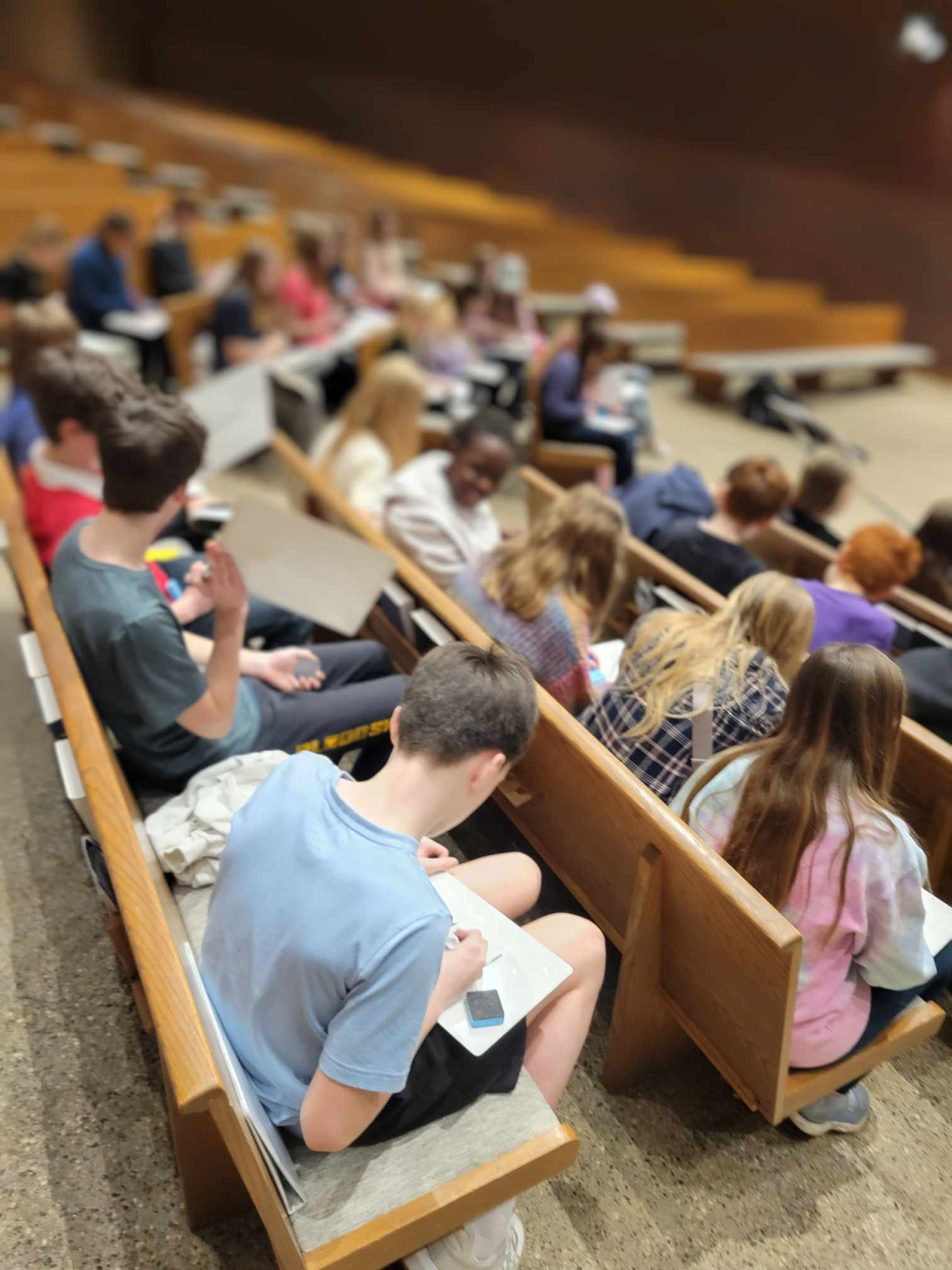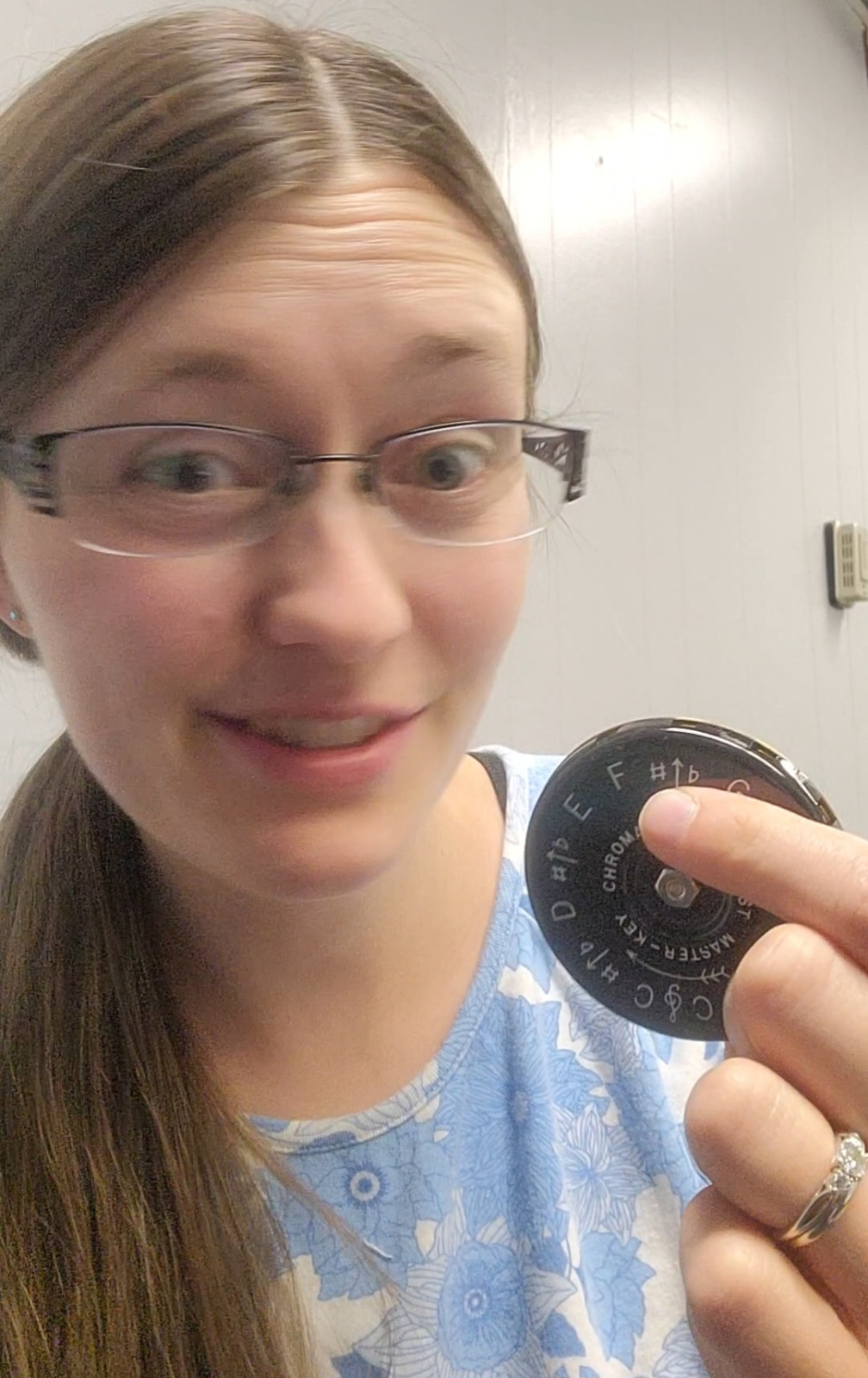
Teaching music to larger class sizes can be both exhilarating and challenging. In the past few years, I have had around 40 singers each in my 3rd-4th and 5th-7th grade homeschool choirs that meet once per week, so I understand the desire and need to connect with students individually but efficiently. The key to success lies in finding ways to engage every student while managing time effectively. One of the most effective methods is to incorporate activities that involve solos, instruments, and games in a way that allows each student to take turns over multiple class periods. This approach not only keeps the class fun and engaging but also provides opportunities for individual connection and assessment. Here’s how you can implement this strategy in your music classroom.
Rotating Turns: A Balanced Approach
1. Plan Your Activities Well
When planning your lessons, consider activities that can be broken down into smaller segments, allowing for individual participation. Here are a few ideas:
- Solos During Echo Songs or Tonal Patterns: Encourage students to sing back a short echo for a warm-up, call and response or echo song, or tonal pattern (if you use Conversational Solfege). In this way, you can truly have every student sing a solo (one line of the echo song) even in large classes and it takes less than 3 minutes!
- Instrumental Rotations: Utilize an instrument for a beat-keeping activity that holds attention (a loud one you don't use often is good for this because you only take out one at a time!). Each student takes a turn playing that instrument to the steady beat while the class speaks or sings a rhyme or simple song to the beat that student set the tempo with. You get to assess that student's steady beat! And each student eventually gets a turn with the special instrument. Pro tip: write down the student's assessment score (referencing a rubric if needed) to check off that they got a turn.
2. Divide and Conquer
Instead of trying to give every student a turn in one class period, spread the activity over two or three sessions. This approach ensures that each student gets a meaningful opportunity to participate without feeling rushed. Here's how you can structure it:
- Session 1: Begin with every student doing the echo or beat keeping on their lap together. Ensure that they can confidently do it as a group.
- Session 2: Begin with confident students/students you know will be a good model of what you are wanting to accomplish if they are new at this. Take requests of who wants to go next or follow a predescribed pattern like "go around the circle."
- Session 3-4: Complete with the remaining students, ensuring everyone has had a chance to participate.
Keeping Track: The Importance of Documentation
1. Use a Turn Tracker
Create a simple chart or spreadsheet to track which students have had their turns. This can be as straightforward as a checklist with student names and dates. Keeping track ensures fairness and helps you plan future sessions. I used a spreadsheet with student names and columns describing which activity and the date so I could track their growth over time and do multiple assessments in one class period easily if needed.
2. Assess and Reflect
While students are taking their turns, use this opportunity to assess their skills and progress. Make notes on their performance, strengths, and areas for improvement if needed. This documentation will be invaluable for providing feedback and tailoring future lessons to meet individual needs.
Building Connections: The Power of Individual Attention
1. Personalized Feedback
After each student's turn, offer personalized feedback if the activity makes sense. In an echo song where each student echos one line, this wouldn't work. In a steady beat activity though, you may say, "Thank you, Johnny, for keeping a steady beat. Pass to Suzie." or "You sped up at the end, Johnny, we are trying to keep a steady beat. Pass to Suzie." Highlight their strengths and provide constructive suggestions for improvement. This individual attention can boost their confidence and motivation.
2. Foster a Supportive Environment
Encourage students to support and cheer for each other during their turns. This creates a positive classroom atmosphere and helps build a sense of community. In younger grades, this could look like a clap for each person after their turn, a thumbs up to their classmate if they could hear that they sang in tune, or a smile as they sit down.
Final Pro Tip
Allow a student to pass their turn if they are not yet comfortable with the activity, you as the teacher, or the classroom space. This could be because it's the beginning of the year, they are shy, they are new to the school part way through the year... there could be so many reasons why a student chooses to pass on any given day. I encourage them to try but if they choose to pass, know that they are still learning and engaging, just in a different way that day. Near the end of the year, I always encourage students to try and occasionally have "no passing" days where everyone tries. I have found that I earn their trust, especially at the beginning of the year, by having this policy.
By rotating turns over multiple class periods, you can effectively manage larger class sizes through keeping the pace moving while also ensuring that every student gets a chance to shine. This approach not only keeps the activities engaging and fun but also allows you to connect with each student individually and assess their progress. With careful planning and documentation, you can create a dynamic and inclusive music classroom where every student feels valued and inspired. For more ideas for larger class sizes (I teach a lot of big groups!), check out Freelance Music Teacher Moms.














0 Comments